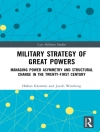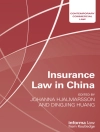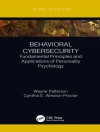This book will take the story of astronomy on from where Allan Chapman left it in Stargazers, and bring it almost up to date, with the developments and discoveries of the last three centuries.
He covers the big names – Halley, Hooke, Herschel, Hubble and Hoyle; and includes the women who pushed astronomy forward, from Caroline Herschel to the Victorian women astronomers.
He includes the big discoveries and the huge ideas, from the Milky War, to the Big Bang, the mighty atom, and the question of life on other planets. And he brings in the contributions made in the US, culminating in their race with the USSR to get a man on the moon, before turning to the explosion of interest in astronomy that was pioneered by Sir Patrick Moore and The Sky at Night.
قائمة المحتويات
COntents
Acknowledgments 18
Preface 21
1 From the Beginning to 1700: The Origins of Astronomy
The origins of astronomy 26
The earliest astronomers 27
What made the ‘Greek experience’ 29
central to Western thought?
Medieval consolidation 32
Europe’s astronomical Renaissance 35
2 Cosmology Begins at Home: Captain Edmond Halley, 41
FRS, RN, Astronomer, Geophysicist, and Adventurer
The schoolboy scientist 42
Early adventures: St Helena, Danzig, and across 44
Europe: the making of a physical scientist
Edmond Halley, the father of meteorology 47
and geophysics
Later adventures: Captain Halley RN takes 50
HMS Paramore among the icebergs
Professor Halley and the Great Aurora Borealis 51
of 1716
Halley studies the nebulae and ponders 53
cosmological vastness
3 Could a Comet Have Caused Noah’s Flood?
Changing views about comets, 1580-1720 57
Dr Robert Hooke takes comets into the chemical 59
laboratory in 1677
Comets tamed at last: 1680-1705 61
Noah’s Flood, the ancient earth, comets, 62
and the saltiness of the sea
Edmond Halley: the Astronomer Royal 64
and the longitude, 1720-42
Religion and politics, a merry life and a 69
sudden death
4 ‘Let there be more light.’ How Telescope Technology
Became the Arbiter in Cosmological Research
Long telescopes on tall poles 73
All done with mirrors: the early reflecting telescope 77
John Hadley and his Newtonian 79
reflecting telescope
A golden guinea an inch: James Short turns the 81
reflecting telescope into big business
John Dollond ‘perfects’ the refracting telescope 84
c. 1760
‘Every gentleman must have one!’ 86
Benjamin Martin, lecturer, and entrepreneur,
makes scientific instruments fashionable
5 The Rector and the Organist: Gravity, Star Clusters,
and the Origins of the Milky Way
Thomas Wright of Durham and eighteenth-century 89
speculative cosmologies
The Revd John Michell: the Pleiades Cluster, ‘dark 91
stars’, and gravitational ‘black holes’ in 1783
Charles Messier: comet hunter and nebula 93
cataloguer of the Ancien Regime in Paris
The enterprising oboist: Herschel comes 94
to England
Herschel the fashionable church organist 97
and musical impresario of Bath
From organ pipes to telescopes, from acoustics 98
to optics, and on to cosmology
Bath, 13 March 1781: William Herschel 100
discovers a ‘comet’
6 William and Caroline Herschel Fathom the 104
‘Construction of the Heavens’ from an English
Country Garden
William Herschel’s telescope technology 106
Observing with a Herschel telescope 107
Stars, the Milky Way, and the ‘Construction of 109
the Heavens’ after 1784
‘Oh Herschel! Oh Herschel! Where do you fly? 112
To sweep the cobwebs out of the sky’
‘Shining fluids’, glowing rings of light, star 113
clusters, and gravity: the Herschelian universe
Observatory House, 1784: an account by a 116
visiting French savant
Sir William Herschel, Knight Guelph 118
A Herschel telescope postscript 119
7 Measuring the Heavens and the Earth in Eighteenth-
Century Europe
Part 1: In Pursuit of Venus: Astronomy’s First Great
International Adventure
In pursuit of the solar parallax 122
Venus in transit, June 1761 125
Venus transits the sun in 1769 129
Le Gentil and the 1769 transit 133
Practical observation, Venus, and the longitude 134
8 Measuring the Heavens and the Earth in Eighteenth-
Century Europe
Part 2: Pendulums, Planets, and Gravity: Creating
the Science of Geodesy
The curious behaviour of M. Richer’s clock: 140
Cayenne, Brazil, 1672
Geophysics by degrees and the shape of the earth 142
The Astronomer Royal, the mountain, and 147
the village fiddler
Geophysics goes to the laboratory: 149
Henry Cavendish and the torsion balance
experiment, 1797-98
9 Cosmology and the Romantic Age 152
From daffodil fields to starry fields: a universe of 152
awe and wonder
Laws of wonder: Herschel, Laplace, 153
and the laws of gravitation
Mysteries beyond the spectrum: 156
Sir William Herschel discovers the ‘dark
spectrum’ in 1800
Science for Georgian ladies and gentlemen 157
The London physician, the Bavarian orphan, 160
and the wonders of light
Professor Bessel and the distance of the stars 163
Caroline the comet hunter 166
10 Sir John Herschel: The Universal Philosopher of 168
the Age
John Frederick William Herschel: a genius 168
in the making
John Herschel inherits the cosmological 170
‘family business’
Optics, chemistry, photography, and a gift 172
for friendship
Slough, marriage, then the Cape of 174
Good Hope
The Herschel cosmos of 1850 178
The size of the stars and their absolute brightness 180
Sir 11 There Must Be Somebody Out There! 184
A fascination with ‘aliens’ 184
The Revd Dr Thomas Dick of Broughty 186
Ferry, Dundee
New York, August 1835, and the 188
‘Great Lunar Hoax’
Jules Verne: from the earth to the moon in 1865 191
Pity the poor Martians dying of thirst: 1877 193
The Martians turn nasty 195
So is there really anybody out there? 196
12 Mary Somerville: Mathematician, Astronomer, and 198
Gifted Science Communicator
Miss Mary Fairfax, the independent-minded 198
admiral’s daughter
Two contrasting husbands 200
Continental travel and international 201
mathematical fame
Mary Somerville, astronomy, and the Herschels 202
Early mathematical and physical works 205
Mary Somerville, the physical sciences expositor 206
On the Connexion of the Physical Sciences, 208
Physical Geography, and On Molecular and
Microscopic Science
Natural laws, religion, and her final voyage 211
13 Sir George Biddell Airy of Greenwich: Astronomer 212
Royal to the British Empire
Sir George Biddell Airy (1801-92): 213
early life and achievements
New instruments, chronometers, time, 217
and the electric telegraph
Airy the scientific civil servant 222
Airy and the discovery of Neptune, 1846 223
The Astronomer Royal and his staff 225
John Herschel, the universal philosopher 182
14 Barristers, Brewers, Peers, and Engineers: Paying for 228
Astronomical Research: the British ‘Grand Amateur’
Tradition
Funding astronomy in Great Britain: 228
the roots of a tradition
The Grand Amateur astronomical world 231
The Liverpool brewer and the Manchester 234
steam-engine builder
The Irish nobleman who discovered the 240
‘whirlpools’ of deep space
The Royal Astronomical Society: 246
a Grand Amateur creation
Postscript: Grand Amateur astronomy today 247
15 The Camera Does Not Lie: The Birth of
Astronomical Photography
Monsieur Louis Daguerre, Sir John Herschel, 249
and Mr William Henry Fox Talbot
Dr John William Draper of New York: 252
the first astronomical photographer
The ‘miracle’ of the ‘wet collodion’ 253
photograph, 1851
Warren De La Rue: the Guernsey-born paper 255
manufacturer and pioneer of
astronomical photography
The first ‘custom-designed’ photographic 258
telescope
James Nasmyth’s The Moon (1874): 260
photographing the moon at second hand
The ‘dry gelatin’ plate and new possibilities 262
Isaac Roberts: photographer of the galaxies 262
16 Unweaving the Rainbow
Part 1: Sunlight, Sunspot Cycles, and Magnetic
Storms 266
Understanding the Sun, Our Nearest Star 266
The great solar storm of 1859 268
‘Rice grains’, ‘granules’, and the solar surface 270
Solar knowledge by 1860: a resume 271
17 Unweaving the Rainbow
Part 2: Cosmologists and Catholic Priest Pioneers
of Astrophysics
An afternoon walk in Heidelberg in 1859 275
Sir William and Lady Margaret Huggins discover 277
gaseous nebulae from a south London garden
Father Angelo Secchi of Rome: 281
the Jesuit pioneer of astrophysics
The Stonyhurst College Jesuit Observatory 282
The sun and the spectroscope 284
Our American cousins and our Irish friends 287
18 The Revd Thomas William Webb and the Birth 291
of ‘Popular Astronomy’
The Revd Mr Webb of Hardwicke, 291
astronomer and popularizer
Celestial Objects for Common Telescopes and 293
Webb’s telescopes
The ‘modest’ amateur astronomer and the 295
new reflecting telescope
Victorian clergymen-astronomer-engineers 297
Astronomical societies and The English Mechanic 300
magazine
Popular astronomy in France 303
John Jones of Brangwyn Bach and other 303
working-men astronomers
19 ‘Ladies of the Night’: The Astronomical Women
in Great Britain and America 310
Scientific education for women 310
Professional astronomy for women in the 312
‘Old World’
Agnes Mary Clerke of Skibbereen, 316
the Irish historian of astronomy
Women in the new amateur astronomical 319
societies after 1881
Florence Taylor: from Leeds to Minnesota 320
Elizabeth Brown, the sun, and the eclipse-chasers 322
The first women Fellows of the Royal 325
Astronomical Society
20 Astronomy for the Masses in the Victorian Age
and Early Twentieth Century
The age of self-improvement: Sunday schools, 327
Mechanics’ Institutes, and the Victorian
‘knowledge industry’
Lord Henry Brougham: pioneer of popular 329
education
Astronomy shows, demonstrations, 331
and lectures
Richard Anthony Proctor and Sir Robert 337
Stawell Ball: stars of the astronomical
lecture circuit
Sir Arthur Stanley Eddington and 341
Sir James Hopwood Jeans: astronomy’s first
‘Knights of the airwaves’
21 Under New World Skies: The Great American
Observatories
North America’s first big observatories 345
The Harvard astrophysicists 348
The ladies of the Harvard Observatory 348
Alvan Clark and Sons, opticians of Boston, Massachusetts 350
American Liberal Arts Colleges and astronomy 352
Percival Lowell, the ‘canals’ of Mars, 353
and Flagstaff, Arizona, in the west
America’s two giant refractors: the Lick and 355
Yerkes Observatories
America’s giant reflecting telescopes 358
Conclusion 360
22 On the Eve of the Watershed: Astronomy and
Cosmology c. 1890-1920
The universe: a steady, stately place? 363
The Michelson-Morley Experiment, 1887 364
‘Twinkle, twinkle, little star; now we know just 367
what you are’: the birth, life, and death of stars
The Hertzsprung-Russell Diagram, 1910-13 371
Henrietta Swan Leavitt and the ‘Cepheid’ stars 373
Harlow Shapley, the spiral galaxies, and the 375
Milky Way
The Great Debate: Smithsonian Museum, 379
Washington DC, 26 April 1920
23 It’s All Relative. The ‘Alice in Wonderland’ World of 381
Early Twentieth-Century Physics
The ‘physics quake’ of the 1890s: X-rays, 382
atoms, and radiation
The mighty atom 385
Mercury, Vulcan, and the problems of gravity 387
The patent clerk of Bern: Albert Einstein and 388
relativity
Sir Arthur Stanley Eddington, Einstein, and the 392
solar eclipse of 1919
Albert Einstein the affable celebrity 394
Postscript 397
24 Crossing the Watershed: Edwin Hubble,
the Celebrity Astronomer of the Galaxies
From small-town Missouri to self-created 398
English gentleman
Hubble, red shifts, and the ‘extra-galactic’ universe 400
Hubble’s Law and Constant 403
The subsequent development of Hubble’s cosmos: 405
Milton Humason, Walter Baade,
and Allan Sandage
Milton Humason 406
Walter Baade 407
Allan Sandage 408
Edwin Hubble and the stars of Hollywood 410
25 The Belgian Priest-Cosmologist and the ‘Cosmic Egg’ 412
Father Georges Lemaitre of Leuven 412
Making sense of modern cosmology: 414
the Royal Astronomical Society discussion meeting,
Burlington House, Piccadilly, London,
10 January 1930
Father Lemaitre and Sir Arthur Eddington 416
‘It’s all a ‘big bang”: Sir Fred Hoyle and his 417
steady state cosmology of 1948
Return to the stars 420
Subrahmanyan Chandrasekhar and the 422
white dwarfs
Lemaitre, Pope Pius XII, and the big bang 426
Stephen Hawking and the black hole 426
26 Sir Bernard Lovell and the ‘Radio Universe’ 428
Karl Jansky’s ‘merry-go-round’ and the birth of 429
radio astronomy
The ‘radio window’ and how the radio telescope 431
works
Grote Reber of Wheaton, Illinois: an amateur leads 433
the way – yet again!
Sir Alfred Charles Bernard Lovell and 435
Jodrell Bank’ Cheshire
Other great radio telescopes 441
The achievement of radio astronomy 443
Sir Bernard Lovell: a recollection 446
27 ‘Fly Me to the Moon’: The Birth of the Space Age 449
Rockets into space 449
The rocket men 451
The first space flights 455
Yuri Gagarin (1934-68), the first space man, 1961 457
The Apollo missions 457
Touchdown: the Sea of Tranquillity, 20 July 1969 459
The Book of Genesis goes to the moon: 460
Christmas 1968
The end of manned missions 460
The unmanned space probes 461
The Hubble Space Telescope 463
Exploring the surface of Mars 464
Terra-forming Mars 467
28 A Universe for the People: Sir Patrick Moore and the 468
New Amateur Astronomy
Popular astronomical fallacies 469
Television and astronomy’s new popular audience 472
Sir Patrick Alfred Caldwell-Moore and 473
The Sky at Night, 1957-2012
Moonstruck: amateur astronomy and the moon 476
after 1950
Transient lunar phenomena, or ‘TLP’s 478
Good telescopes for all 479
The researches of modern amateur astronomers 481
The post-1950 amateur astronomy movement 483
Carl Edward Sagan and Cosmos, 1980 484
Sir Patrick Moore: the man and the astronomer 485
29 Postscript: Creation Revisited: Where Do We 489
Stand Today?
Life on other worlds and space travel, 490
twenty-first-century style
Creation, cosmology, and the mind of God 493
Appendix: The Cock Lane Ghost, or the 496
‘Ghost Catch’
Notes 497
List of In-text Illustrations 508
Further Reading 513
Index 545
عن المؤلف
Dr Allan Chapman is a historian of science at Oxford University, with special interests in the history of astronomy and of medicine and the relationship between science and Christianity. As well as University teaching, he lectures widely, has written a dozen books and numerous academic articles, and written and presented two TV series, Gods in the Sky and Great Scientists, besides taking part in many other history of science TV documentaries and in The Sky at Night with Sir Patrick Moore. He has received honorary doctorates and awards from the Universities of Central Lancashire, Salford, and Lancaster, and in 2015 was presented with the Jackson-Gwilt Medal by the Royal Astronomical Society. Among his books are Slaying the Dragons. Destroying Myths in the History of Science and Faith (Lion Hudson, 2013), Stargazers: Copernicus, Galileo, the Telescope, and the Church. The Astronomical Renaissance, 1500-1700 (Lion, 2014), and Physicians, Plagues, and Progress. The History of Western Medicine from Antiquity to Antibiotics (Lion, 2016). He is also the author of the scientific biographies England’s Leonardo. Robert Hooke and the Seventeenth-Century Scientific Revolution (Institute of Physics, 2005), Mary Somerville and the World of Science (Canopus, 2004; Springer, 2015), and The Victorian Amateur Astronomer. Independent Astronomical Research in Britain, 1820-1920 (Wiley-Praxis, 1998; revised edn. Gracewing, 2017).












